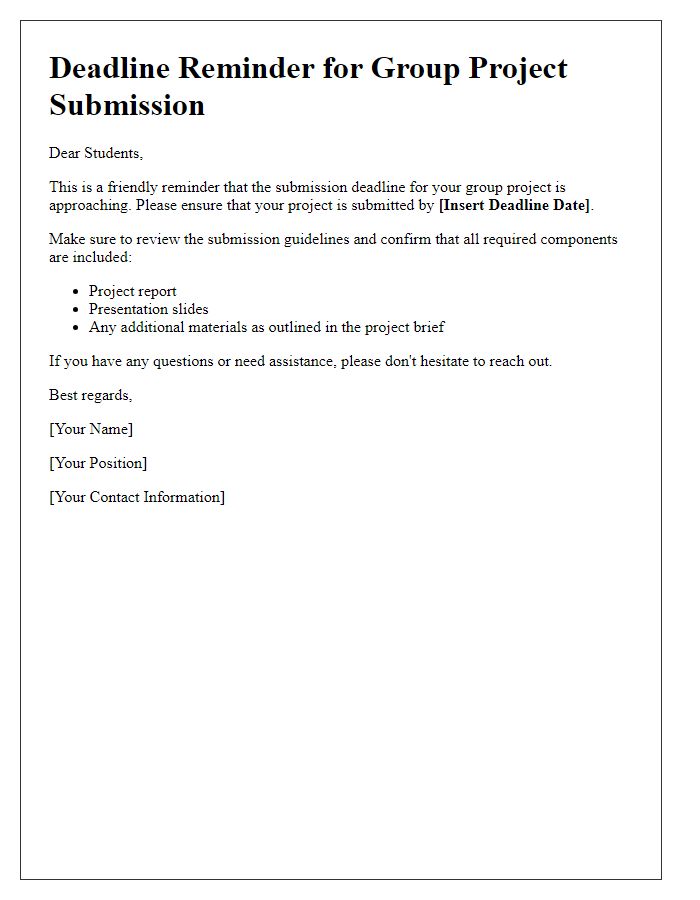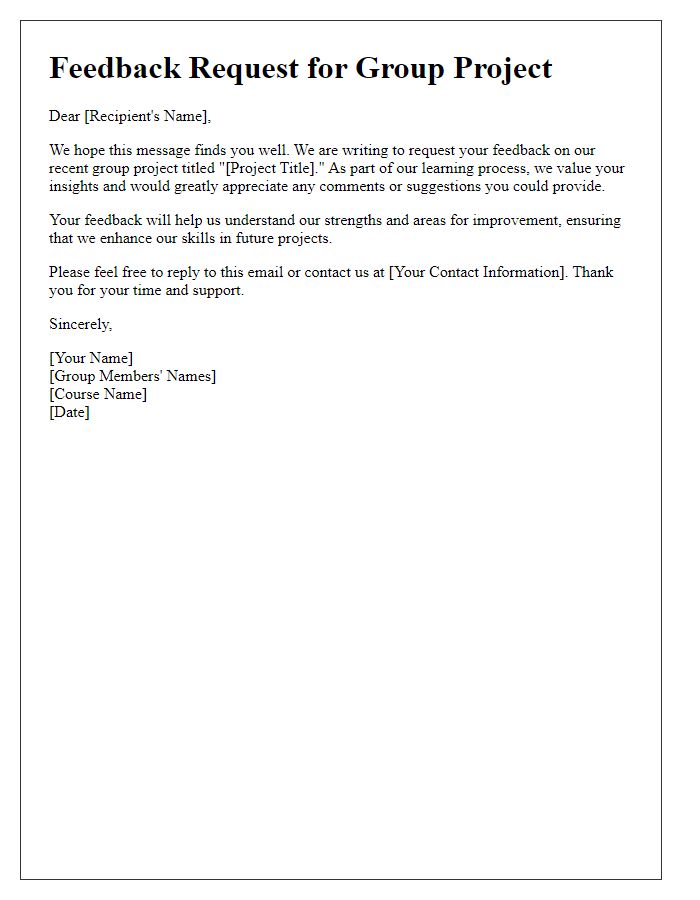Hey there, team! As we embark on this exciting group project, it's essential to remember that collaboration is our secret ingredient for success. From brainstorming ideas to dividing tasks, our communication will be key in creating something we can all be proud of. So, let's dive in and make this a memorable experienceâread on for tips on how to keep us all on track!

Introduction and Objective
For effective collaboration in student group projects, a solid introduction outlines the project's purpose and defines its objectives clearly. The introduction should include the project title, which serves as a reference point for the team, and relevant background information providing context about the topic. Key objectives must be specific, measurable, achievable, relevant, and time-bound (SMART), ensuring each team member understands their role within the project scope. Establishing a collaborative environment encourages open communication among team members, fostering a sense of shared responsibility towards achieving common goals.
Team Members and Roles
Student group projects often require the collaboration of diverse team members, each assigned specific roles to enhance productivity and efficiency. In a typical assignment, team members may include a Project Manager responsible for overseeing timelines, a Researcher dedicated to gathering relevant data and sources, a Presenter who articulates the group's findings during presentations, and a Writer tasked with compiling the final report. Effective communication and collaboration among these roles are essential for the successful completion of the project, ensuring that everyone contributes their unique skills and perspectives. Establishing clear responsibilities allows the team to work cohesively towards shared academic objectives, such as achieving high grades or gaining deeper understanding of the subject matter.
Project Timeline and Milestones
A student group project requires a well-structured timeline to ensure efficient collaboration and timely completion. The project timeline outlines key milestones, including initial brainstorming sessions, where team members generate ideas and allocate responsibilities, occurring within the first week. The next milestone involves research and data collection, typically spanning weeks two to four, focusing on gathering relevant resources from academic journals and credible websites. Following this phase, the team will enter the drafting stage, lasting two weeks, where the initial project report will be created based on compiled information. Subsequent revisions, spanning one week, will involve feedback sessions where group members critique and enhance each other's contributions. The final presentation preparation will take place in the last week, ensuring that all elements align with the project's goals and objectives, culminating in the project's submission and presentation on the scheduled deadline.
Communication and Collaboration Tools
Effective communication and collaboration tools are essential for student group project success, particularly in educational settings like universities or colleges. Platforms such as Microsoft Teams, which offers chat, video conferencing, and file sharing, facilitate real-time collaboration among team members, typically consisting of four to six students. Google Workspace tools, including Docs, Sheets, and Slides, enable simultaneous editing and allow for seamless integration of ideas and contributions from participants, often leading to enhanced creativity and productivity. Project management applications like Trello or Asana help organize tasks and deadlines, ensuring that everyone remains accountable, especially for multi-week assignments. Utilizing these tools not only improves organization but also fosters teamwork, ultimately leading to more successful project outcomes in a competitive academic environment.
Evaluation and Feedback Process
The Evaluation and Feedback Process in student group projects plays a critical role in fostering collaboration and enhancing learning. Constructive feedback, such as peer reviews, typically occurs at designated stages, promoting accountability among group members. Evaluation criteria may include elements like communication effectiveness, task completion rates, and adherence to deadlines, ensuring that all participants contribute fairly. In addition, post-project reflection sessions allow team members to discuss challenges faced, resolution strategies, and overall project outcomes, facilitating a deeper understanding of group dynamics. The implementation of anonymous surveys can further encourage honest feedback, allowing students to express their thoughts candidly on team performance and individual contributions. Overall, this structured approach to evaluation empowers students to develop essential skills like teamwork, critical thinking, and self-assessment, which are crucial for future academic and professional success.
Letter Template For Student Group Project Team Assignment Samples
Letter template of collaboration proposal for student group project assignment.

Letter template of project goal clarification for student group assignment.

Letter template of meeting arrangement for student group project discussion.

Letter template of deadline reminder for student group project submission.

Letter template of issue resolution for student group project challenges.

Letter template of final presentation planning for student group project.








Comments